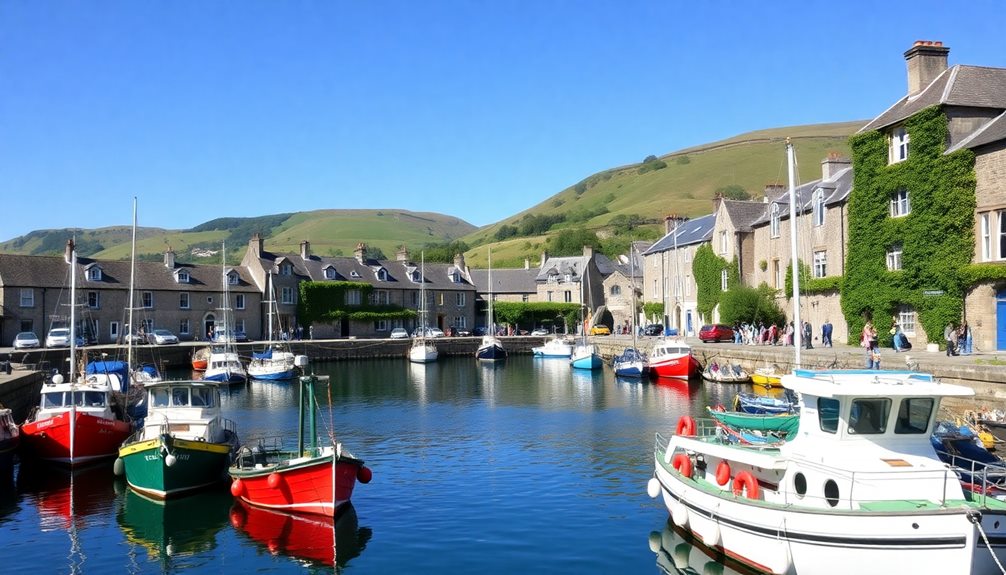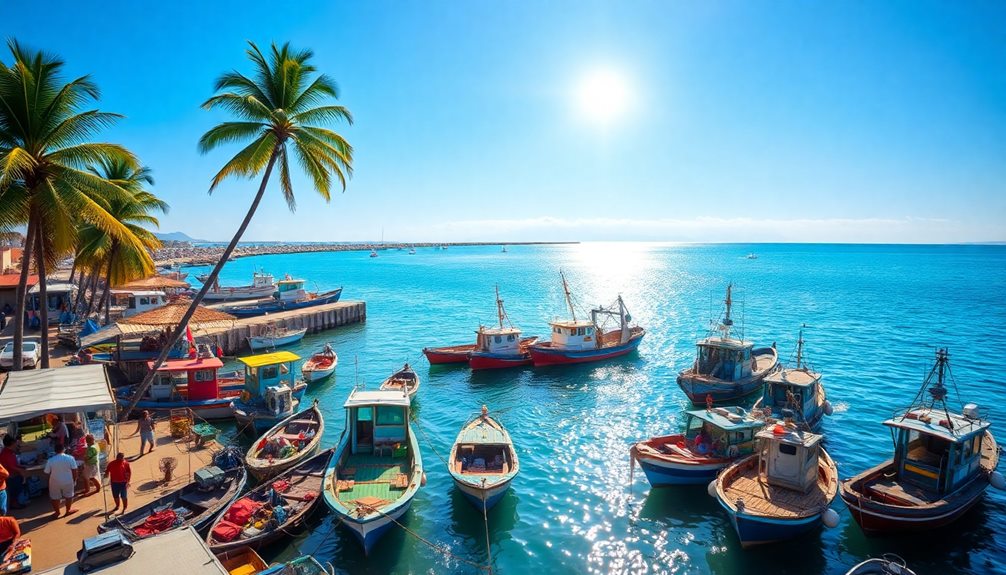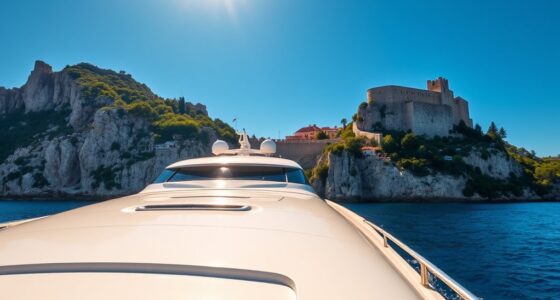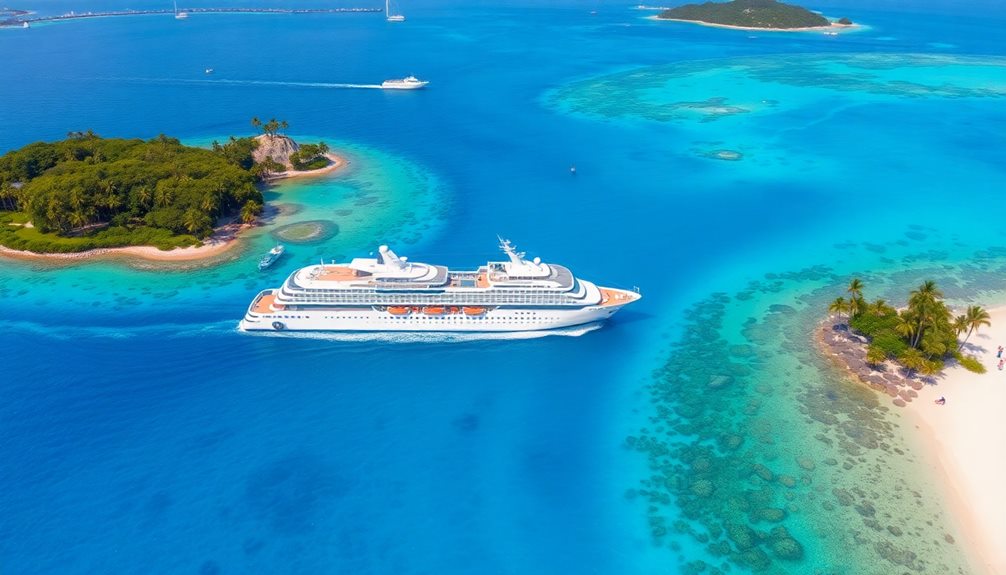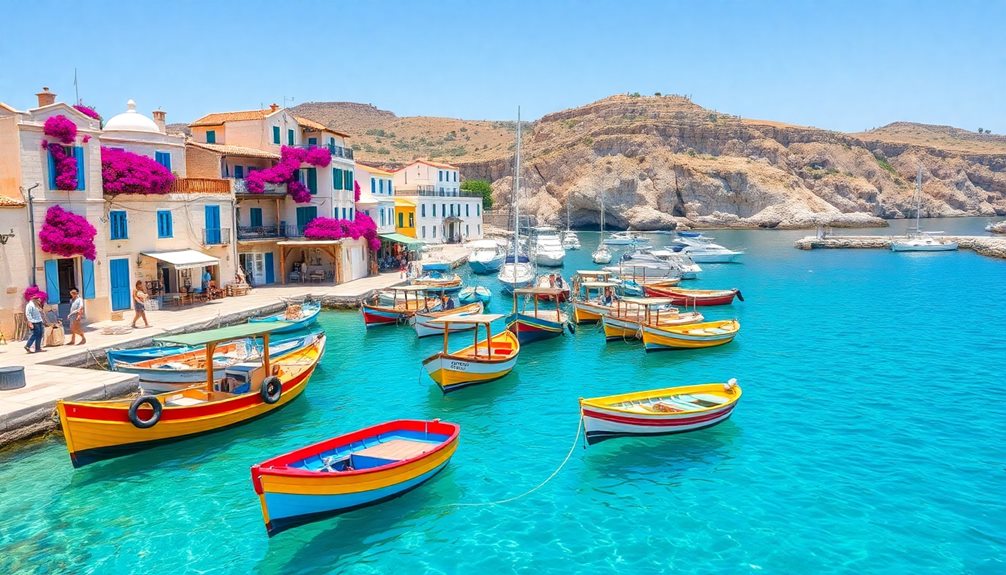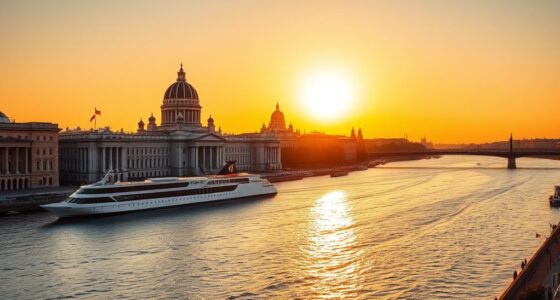When you cruise the British Isles, you'll discover a tapestry of experiences waiting at every port. Start in Southampton to visit the iconic Stonehenge or explore Liverpool's rich musical history. Edinburgh offers stunning views from its castle, while Belfast's Titanic museum draws you into its maritime legacy. Don't miss the breathtaking Cliffs of Moher or the enchanting Isle of Skye for nature lovers. Each port has unique charm, history, and attractions that promise adventure. There's so much to uncover across these magical shores, making your journey all the more intriguing. You'll find even more highlights just ahead.
Key Takeaways
- Southampton is the largest UK cruise port, offering attractions like SeaCity Museum and proximity to Stonehenge.
- Edinburgh, with its historic castle and Royal Mile, showcases rich Scottish culture and history.
- The Orkney and Shetland Islands feature unique wildlife encounters and archaeological sites like Skara Brae and Jarlshof.
- Belfast is home to the Titanic Belfast museum, highlighting the city's industrial heritage and maritime history.
- The Cliffs of Moher in Ireland provide breathtaking coastal views and are home to diverse seabird colonies.
English Cruise Ports
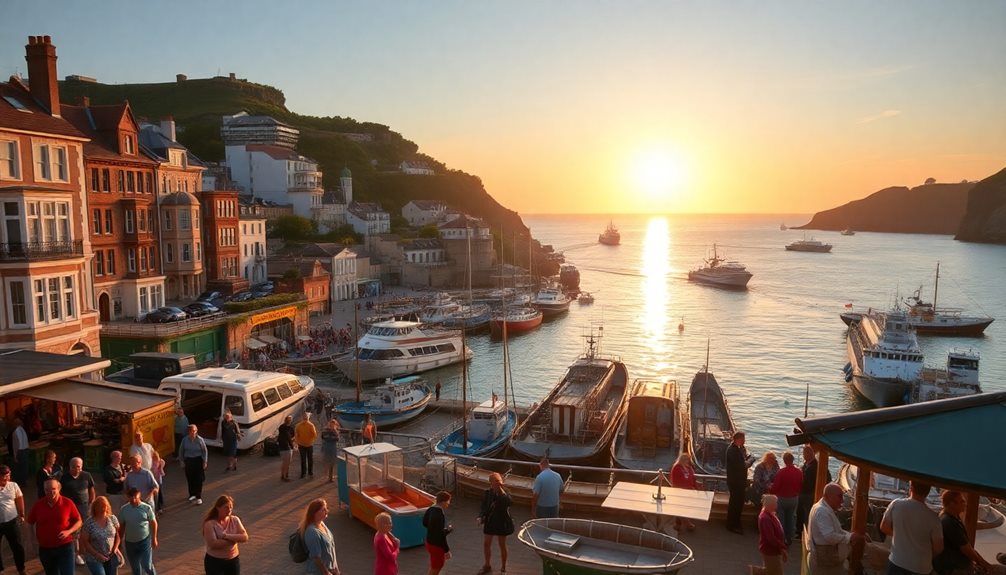
When setting sail from the English shores, you'll discover a variety of vibrant cruise ports that each offer unique attractions and experiences.
Your journey might start in Southampton, the largest UK cruise port, where you can explore the SeaCity Museum or take a stroll through Mayflower Park. If you fancy historical sites, Stonehenge is just a short trip away.
Next, you could dock at Dover, where the iconic White Cliffs and Dover Castle await. This port serves as a gateway to France and the charming towns of Whitstable and Canterbury, providing a perfect blend of culture and scenery.
Liverpool, known as the birthplace of The Beatles, offers a lively atmosphere. You'll want to visit The Beatles Story and the Merseyside Maritime Museum, immersing yourself in the city's rich cultural heritage.
London, with docking points at Tower Bridge and Greenwich, allows you to experience landmarks like Buckingham Palace and the Tower of London.
Lastly, Newcastle enchants visitors with attractions like the Biscuit Factory gallery and the Great North Museum, not to mention the stunning Angel of the North.
Each of these English cruise ports enriches your British Isles cruises with unforgettable experiences.
Scottish Cruise Ports
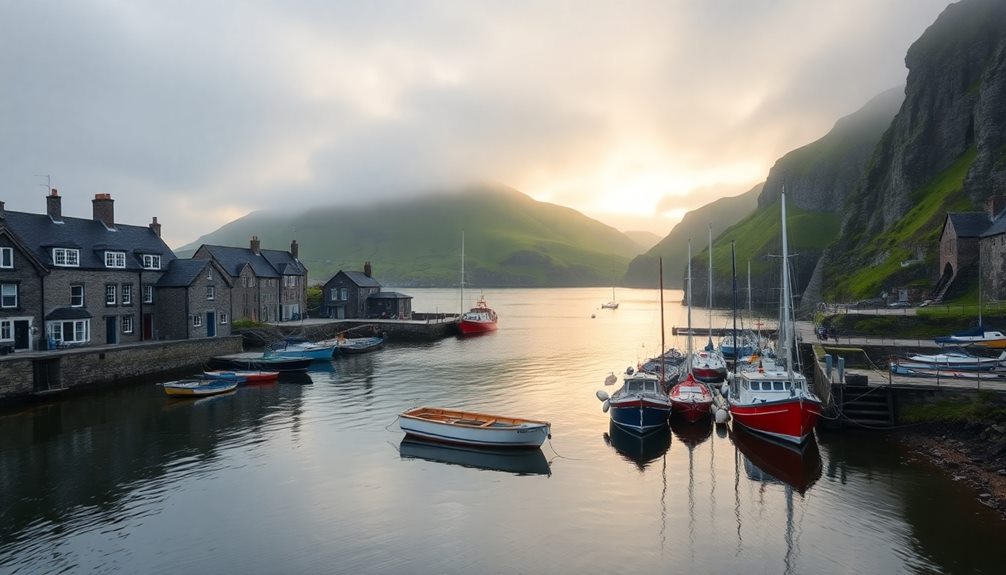
Scottish cruise ports offer a gateway to some of the most breathtaking landscapes and rich histories in the UK. When you step off your cruise ship, you'll find yourself immersed in stunning scenery and historic sites.
Here are four highlights you won't want to miss:
- Edinburgh: Dock at Rosyth or Leith and explore the iconic Edinburgh Castle and the Royal Mile, where history comes alive.
- Oban: Known as the "Gateway to the Isles," Oban provides ferry access to the enchanting Scottish islands, a vibrant seafood culture, and spectacular coastal views.
- Isle of Skye: This stunning island in the Hebrides is perfect for wildlife encounters and breathtaking natural scenery, often explored by small ship cruises.
- Glasgow: Scotland's second city boasts landmarks like Glasgow Cathedral and the Riverside Museum, with cultural treasures in Kelvingrove Park.
Whether you're wandering through the historic streets of Edinburgh or gazing at the rugged beauty of the Isle of Skye, Scottish ports promise unforgettable experiences that'll leave you wanting more.
Get ready for an adventure filled with charm and history!
Orkney and Shetland Islands
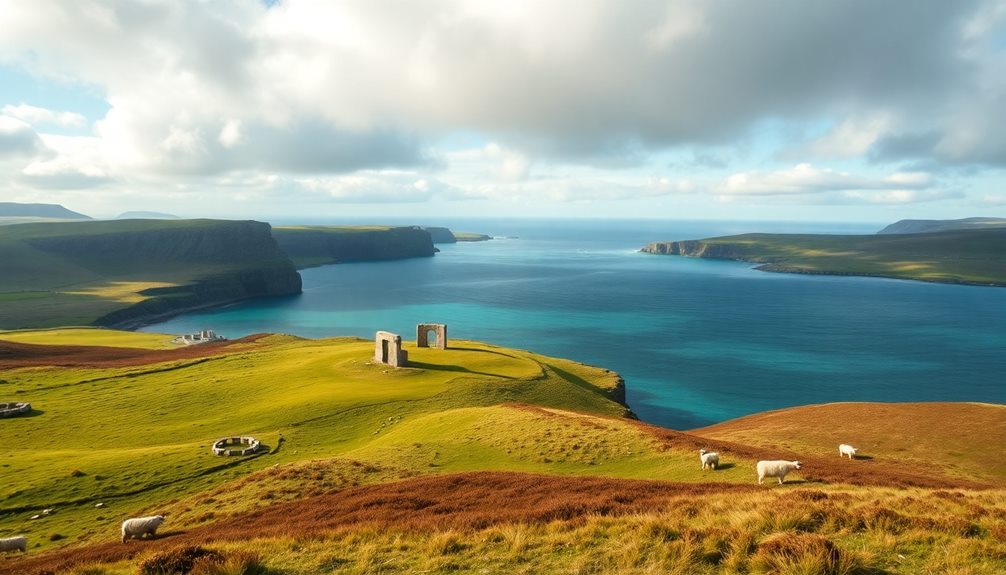
When you visit the Orkney and Shetland Islands, you'll uncover fascinating historical sites like Skara Brae and Balfour Castle that bring the past to life.
You can also enjoy wildlife encounters, spotting seals and seabirds along the stunning coastlines.
Each island offers unique experiences that blend culture, history, and nature beautifully.
Historical Sites Exploration
Nestled in the windswept beauty of the North Atlantic, the Orkney and Shetland Islands offer a treasure trove of historical sites that invite exploration.
You'll be amazed by the rich history found in these islands, where remnants of the past come alive. Here are some must-visit historical sites:
- Skara Brae – A UNESCO World Heritage Site, this Neolithic village dates back to around 3200 BC, showcasing ancient life.
- Ring of Brodgar – One of the largest Neolithic stone circles in Scotland, featuring 27 standing stones believed to have had ceremonial significance.
- Jarlshof – This archaeological site in Shetland reveals 4,000 years of human settlement, spanning the Stone Age to the Viking Age.
- St Magnus Cathedral – Located in Kirkwall, this impressive structure, founded in 1137, boasts striking Romanesque architecture and a fascinating rich history.
As you explore these ancient burial mounds and standing stones, you'll connect with the profound stories of the islands' Neolithic and Viking heritage, making your visit a truly unforgettable experience.
Wildlife Encounters and Tours
The Orkney and Shetland Islands boast an incredible array of wildlife encounters that thrill nature lovers. In the Orkney Islands, you'll find puffins, seals, and majestic sea eagles, making it a birdwatcher's paradise.
Meanwhile, Shetland's rugged coastlines are home to Shetland ponies, playful otters, and a variety of seabirds, providing ample opportunities for unforgettable sightings.
To make the most of your adventure, consider joining guided marine life tours that take you to remote areas. These tours often include boat trips where you can see dolphins and even spot whales swimming in the surrounding waters.
Small ship cruises offer an intimate experience, allowing you to access less-visited islands and secluded locations perfect for observing wildlife in their natural habitats.
Don't miss the chance to immerse yourself in the beauty of these islands! Whether you're cruising around Orkney or exploring the enchanting shores of Shetland, these wildlife encounters will leave you with lasting memories.
Welsh Cruise Ports
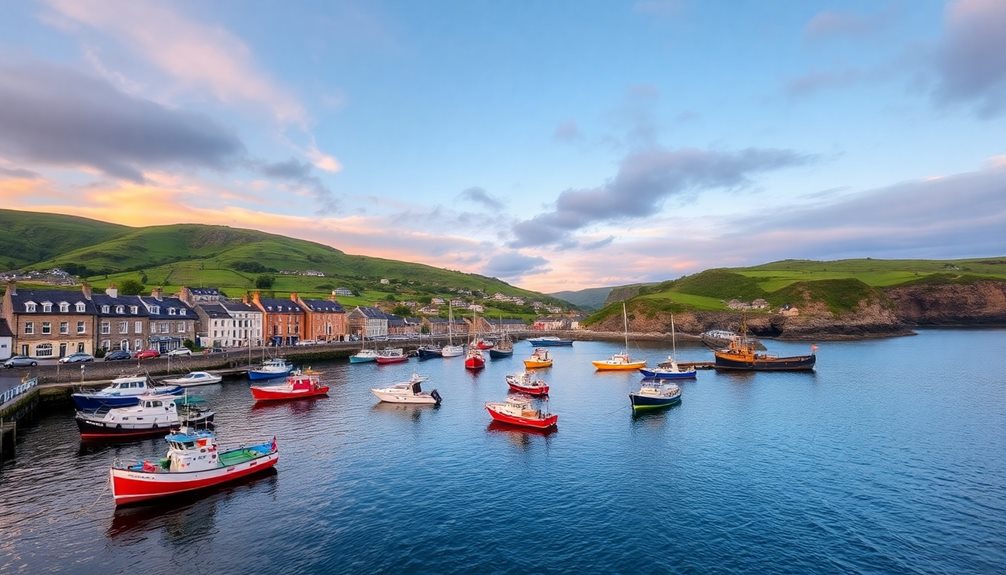
Wales boasts an enchanting array of cruise ports that offer easy access to stunning landscapes and rich history. When you explore these Welsh cruise ports, you'll discover unique attractions that make each port special. Here are four highlights you shouldn't miss:
- Cardiff: The capital city features Cardiff Castle, with origins dating back to Roman times, and a vibrant waterfront at Cardiff Bay filled with shops and restaurants.
- Milford Haven: This port is home to a large natural harbor, offering enchanting coastal scenery and proximity to historical sites like Pembroke Castle.
- Fishguard: A picturesque port providing access to the breathtaking Pembrokeshire Coast National Park, famous for its dramatic cliffs and diverse wildlife, including seals and seabirds.
- Swansea: Known for its stunning coastline along the Gower Peninsula, the first area in the UK designated as an Area of Outstanding Natural Beauty, perfect for nature enthusiasts.
Additionally, Holyhead serves as a gateway to Anglesey Island, renowned for scenic landscapes and hiking opportunities in Snowdonia National Park.
Each port showcases the beauty and culture that make Welsh cruise ports unforgettable.
Irish Ports and Attractions
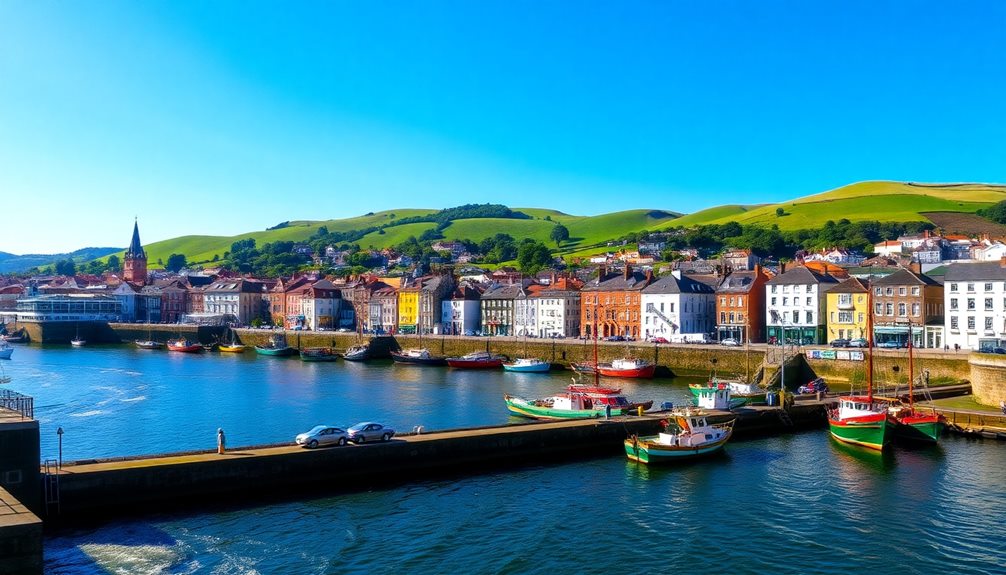
After exploring the enchanting Welsh cruise ports, it's time to set your sights on Ireland, where a wealth of attractions awaits.
Start your journey in Belfast, home to the impressive Titanic Belfast museum. Here, you can immerse yourself in the ship's history and the city's rich industrial heritage.
Then, head to the picturesque town of Cobh, where colorful waterfront buildings greet you. Don't miss the Titanic Experience, which tells the poignant story of the Titanic's last port of call.
In Cork, you'll find Blarney Castle, a must-visit where you can kiss the famous stone and gain the gift of eloquence.
Afterward, set off to discover the scenic Ring of Kerry for breathtaking coastal views.
Next, make your way to Galway, celebrated for its vibrant arts scene. Stroll through Quay Street and admire the Spanish Arch before venturing to the stunning Cliffs of Moher.
Standing 702 feet above the Atlantic Ocean, these cliffs offer some of the most dramatic views imaginable.
Each port in Ireland promises unique experiences that capture the heart of this beautiful country.
Iconic Historic Sites
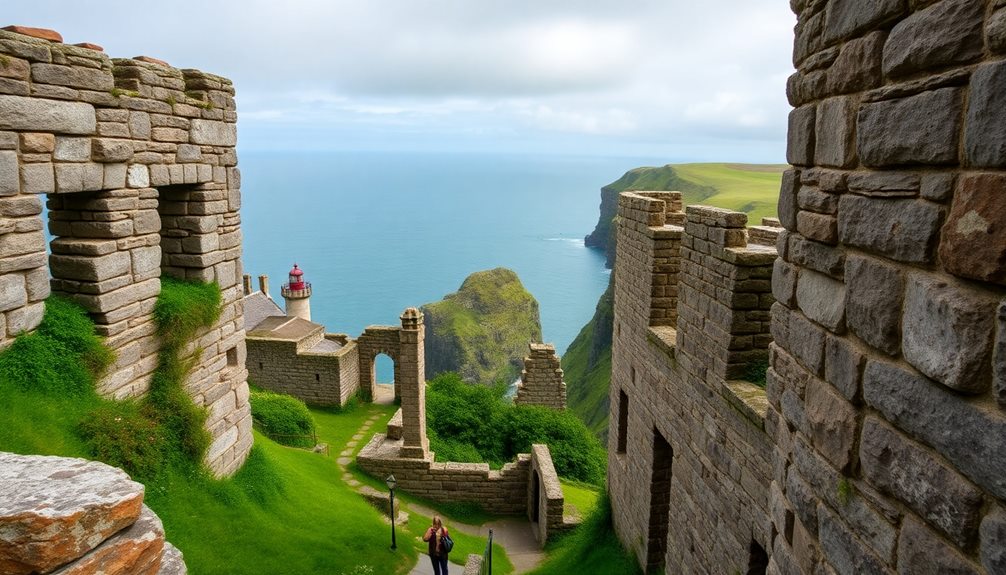
When you think of iconic historic sites in the British Isles, several extraordinary landmarks come to mind. These sites reflect the rich history and culture of the region, making them crucial stops on your British Isles cruise.
Here are four you shouldn't miss:
- Stonehenge: This UNESCO World Heritage Site features massive stone circles dating back to 3000 BC, believed to have astronomical significance. Make sure to grab special access tickets for a closer view of the stones.
- Edinburgh Castle: Dominating the skyline of Edinburgh, this historic fortress houses the Honours of Scotland and offers panoramic views of the city. It's a critical military heritage site with connections to the Stone of Destiny.
- The Tower of London: Established in 1066, this iconic castle has served as a royal palace, fortress, and prison. Don't miss the Crown Jewels, including the stunning Imperial State Crown.
- Blarney Castle: Dating back to 1446, this castle is famous for the Blarney Stone, said to grant eloquence to those who kiss it.
Exploring these sites will deepen your appreciation for the British Isles' fascinating history.
Natural Wonders and Landscapes
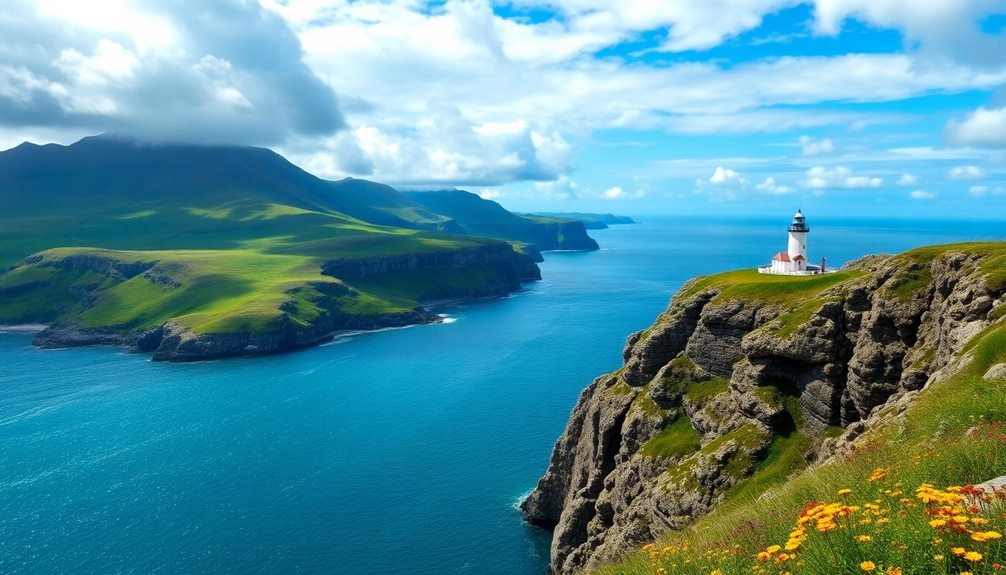
The British Isles are home to a stunning array of natural wonders and landscapes that will leave you in awe. You can't miss the breathtaking Cliffs of Moher in County Clare, soaring 702 feet above the Atlantic Ocean. Stretching 8 kilometers along the coast, they offer incredible views and a diversity of seabird colonies.
Another must-see is the Giant's Causeway, a UNESCO World Heritage Site in Northern Ireland, where you'll find about 40,000 interlocking basalt columns created by volcanic activity over 60 million years ago.
If you're looking for rugged beauty, head to the Isle of Skye in Scotland. Its dramatic landscapes, including the iconic Old Man of Storr and the Quiraing, are a hiker's paradise. For those seeking a challenge, conquer Ben Nevis, the highest mountain in Britain, standing at 1,345 meters. The panoramic views from the summit are absolutely worth the effort.
Travel Tips and Recommendations
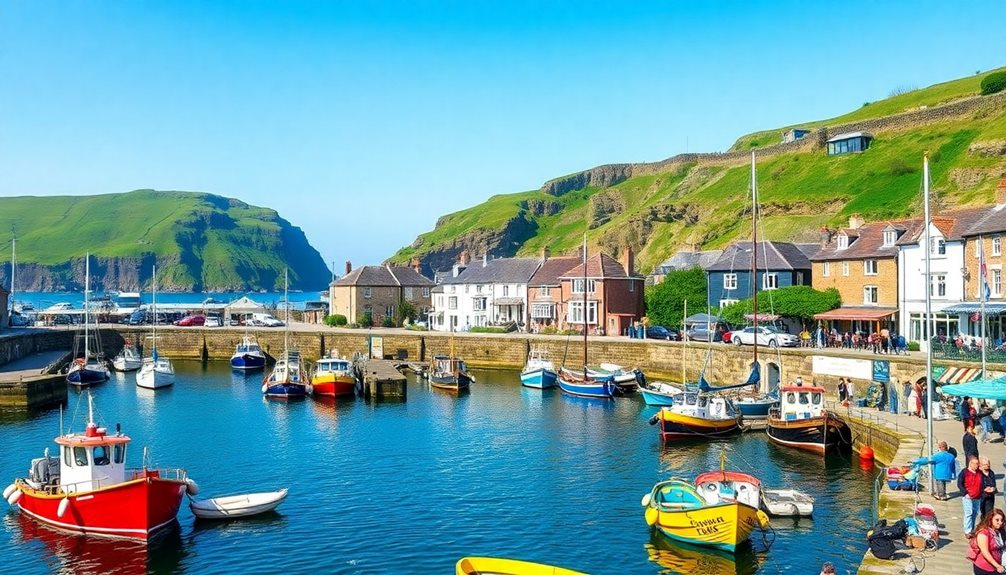
Before you set sail on your British Isles adventure, it's essential to prepare for the unique travel conditions you'll encounter. The weather can be unpredictable, so packing waterproof jackets and layers will keep you comfortable during your excursions.
Here are some important tips to guarantee a smooth journey while cruising the British Isles:
- Travel Insurance: Consider booking travel insurance to cover cancellations, emergencies, and unexpected changes.
- Local Currencies: Familiarize yourself with local currencies—GBP is used in England, Wales, and Northern Ireland, while the Euro is used in the Republic of Ireland.
- Passport Validity: Confirm your passport is valid for at least six months beyond your planned travel dates to meet entry requirements at various ports.
- Shore Excursions: Advance booking of shore excursions is highly recommended to secure your spots for popular destinations, especially during the peak cruising season from late spring to early autumn.
Following this expert advice will help you make the most of your trip. With preparation, you can fully enjoy the stunning landscapes and rich culture the British Isles have to offer!
Conclusion
As you plan your cruise through the British Isles, remember the unique experiences waiting for you at each port. Picture yourself standing on the cliffs of Moher, feeling the sea breeze and marveling at the breathtaking views. Or imagine exploring the historic streets of Edinburgh, where every corner tells a story. Embrace the adventure, soak in the culture, and create memories that'll last a lifetime. The British Isles are calling—don't miss out on this journey!

